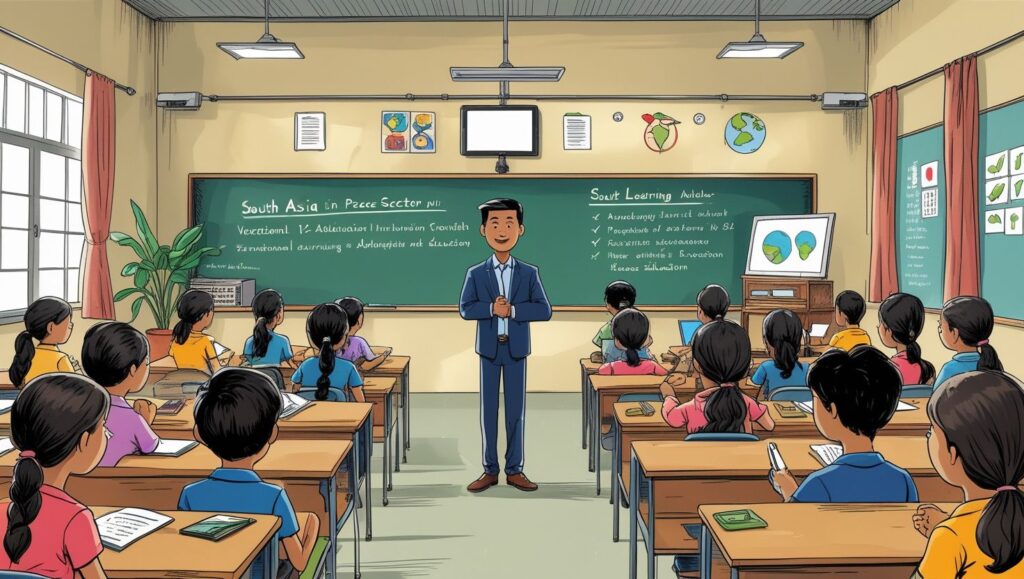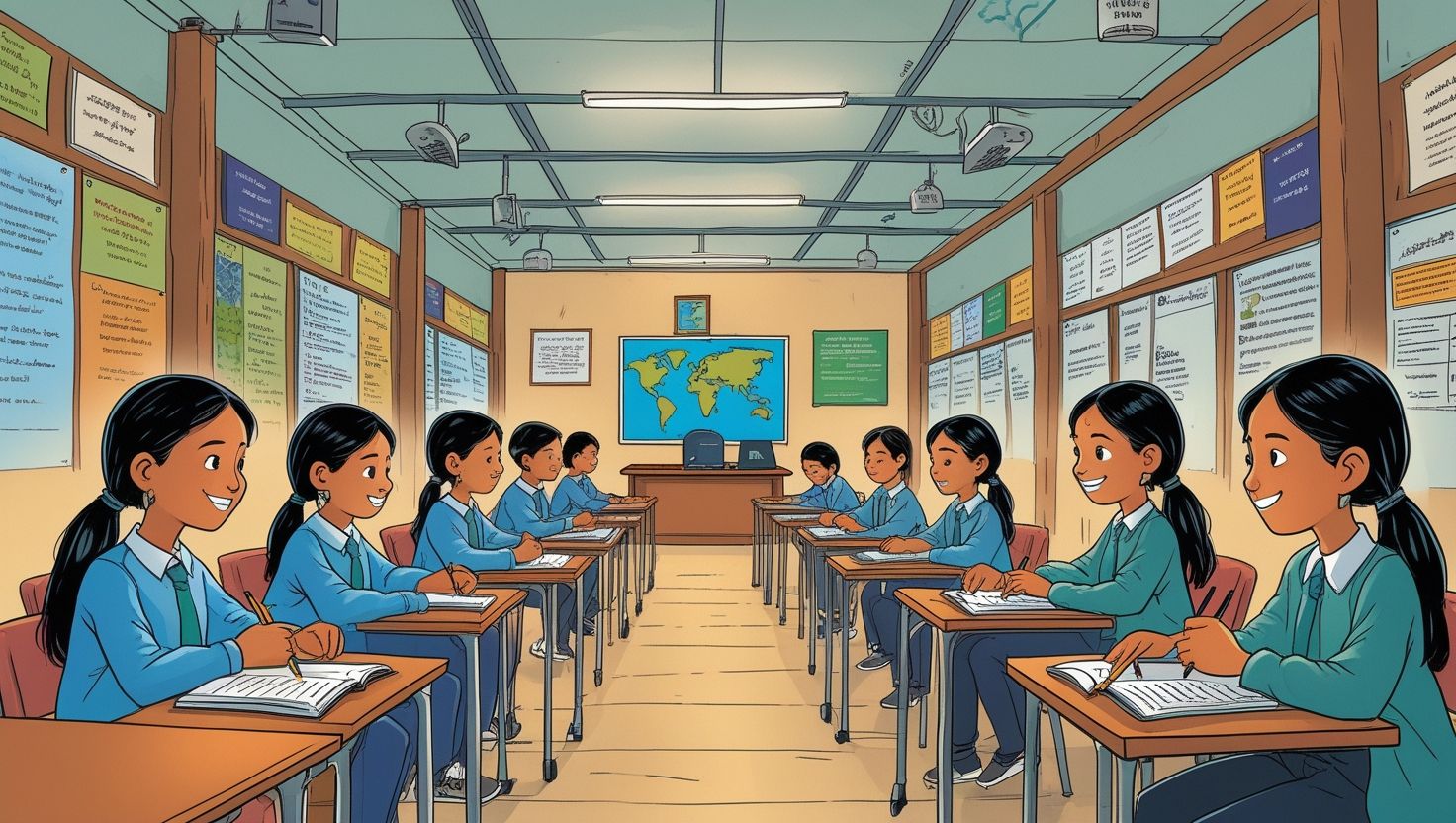Introduction
South Asian Educational Needs and Opportunities, Education in South Asia plays a vital role in shaping the future of the region. With countries like India, Pakistan, Bangladesh, Sri Lanka, Nepal, Bhutan, and the Maldives, the region holds immense potential. However, there are significant educational challenges. Issues such as poverty, inequality, and infrastructure gaps limit access to quality learning. At the same time, rapid population growth increases pressure on educational systems. Nevertheless, opportunities exist for improvement through reforms, technology, and regional collaboration. By addressing these challenges, South Asia can transform its education system to meet global standards. Therefore, understanding the educational needs and available opportunities in this diverse region is crucial for sustainable development and progress.
The Importance of Education in South Asia
Education is the backbone of progress in South Asia. It contributes to poverty reduction, economic growth, and social development. A literate and skilled population is better equipped to tackle unemployment, inequality, and health issues. However, the region still struggles with disparities in access to schools, particularly between rural and urban areas. In addition, gender inequality continues to restrict opportunities for girls in many communities. Nevertheless, investment in education can empower youth and foster innovation. As South Asia has the world’s largest youth population, strengthening education is both a need and an opportunity. By prioritizing inclusive and quality education, governments can ensure long-term stability and prosperity for their citizens.
Literacy Rates and Educational Gaps
Literacy rates in South Asia vary significantly across countries. For example, Sri Lanka enjoys high literacy levels, while Afghanistan and parts of Pakistan face serious challenges. Although progress has been made, millions of children still remain out of school. The gap widens due to poverty, child labor, and lack of proper facilities. In rural areas, children often walk long distances to attend schools. Moreover, many schools lack qualified teachers and proper infrastructure. Such conditions create learning disparities that affect national development. Bridging these gaps requires targeted policies, investment in infrastructure, and teacher training. Expanding literacy not only promotes employment opportunities but also strengthens democratic participation and social harmony.
The Role of Technology in Education
Technology provides an important opportunity for South Asian education systems. With digital tools, students can access quality resources, even in remote areas. Online learning platforms, mobile applications, and smart classrooms are changing traditional teaching methods. Additionally, technology can bridge the urban-rural divide by offering flexible and cost-effective solutions. However, access to the internet and digital devices remains uneven across the region. Many rural areas face connectivity challenges that hinder online education. Governments must invest in affordable internet access and provide digital training for teachers and students. If used effectively, technology can transform education in South Asia and prepare students for the global economy.

Gender Equality in Education
Gender inequality remains a major barrier in South Asian education. Although more girls are attending schools today compared to previous decades, the gap still persists. In some areas, cultural traditions and economic pressures discourage families from sending girls to school. Early marriages and household responsibilities further limit their learning opportunities. Nevertheless, initiatives promoting girls’ education have shown promising results. Scholarships, awareness campaigns, and community engagement are helping families realize the value of educating daughters. Furthermore, providing safe school environments encourages greater female participation. Achieving gender equality in education is essential for social justice, economic growth, and community development in the region.
Quality of Teachers and Training Needs
The quality of teachers directly impacts the effectiveness of education. In South Asia, many schools face a shortage of qualified teachers. Often, teachers lack proper training in modern teaching methods. As a result, students do not receive engaging or practical lessons. In addition, teachers in rural areas often work with limited resources, which makes their jobs more challenging. Addressing these needs requires continuous professional development programs. Governments must invest in teacher training, mentorship, and adequate salaries. At the same time, using digital platforms for training can reach wider audiences. Improving teacher quality is essential for raising educational standards and ensuring that students achieve meaningful learning outcomes.
Higher Education and Skill Development
Higher education in South Asia has grown rapidly, but challenges remain. Universities often face overcrowding, outdated curricula, and limited research opportunities. Furthermore, the gap between academic learning and job market needs is widening. Many graduates struggle to find employment due to a lack of practical skills. Therefore, there is an urgent need to align higher education with skill development. Partnerships with industries, vocational programs, and internships can help bridge this gap. Additionally, promoting innovation and entrepreneurship within universities can prepare students for future challenges. Strengthening higher education is critical for the region to compete globally and provide opportunities for its young workforce.
Regional Cooperation in Education
South Asia benefits from shared cultures, languages, and historical ties, making regional cooperation possible. Collaborative educational programs can help address common challenges. For example, student exchange programs and joint research projects can strengthen learning opportunities. Moreover, sharing best practices in curriculum design and teaching methods can improve education across borders. However, political tensions and lack of trust sometimes hinder cooperation. Overcoming these barriers requires commitment to education as a unifying force. Regional bodies like SAARC can play an important role in promoting educational collaboration. Through collective efforts, South Asia can unlock new opportunities for innovation, equity, and sustainable development in education.
The Impact of Poverty on Education
Poverty remains one of the most significant barriers to education in South Asia. Many families cannot afford school fees, uniforms, or learning materials. Consequently, children are forced into labor to support household income. This cycle keeps families trapped in poverty for generations. Governments have introduced free education policies, yet hidden costs continue to burden poor families. Moreover, underprivileged children often drop out before completing their studies. Addressing this issue requires strong social protection measures and financial support programs. Conditional cash transfers, free meals, and scholarship schemes can reduce the burden on families. By breaking the link between poverty and education, South Asia can secure a brighter future.

Opportunities for Educational Reforms
Despite the challenges, South Asia has numerous opportunities for reform. Increasing investment in infrastructure, adopting digital technologies, and improving teacher training are key areas of focus. Additionally, governments can promote community involvement in schools, which builds trust and accountability. Expanding vocational training and aligning education with job market needs also offers long-term benefits. International organizations and NGOs can further support educational development through funding and expertise. Importantly, reforms must be inclusive, ensuring that marginalized groups have equal opportunities. By embracing these opportunities, South Asia can build an education system that supports sustainable growth, innovation, and global competitiveness.
Conclusion
South Asia’s educational landscape reflects both immense challenges and significant opportunities. While issues such as poverty, gender inequality, and poor infrastructure hinder progress, the region also has the potential to transform education. Investment in teachers, digital technology, and higher education can create lasting change. Moreover, regional cooperation and reforms tailored to local needs can bridge gaps and promote equity. By addressing these needs, South Asia can empower its youth, reduce poverty, and foster sustainable development. The future of South Asia depends heavily on education, making it essential to prioritize quality, inclusivity, and innovation.
References
- UNESCO. (2023). Education in South Asia: Achievements and Challenges. Paris: UNESCO Publishing.
- World Bank. (2022). Transforming Education in South Asia: Opportunities and Reforms. Washington, DC: World Bank.
- UNICEF. (2023). Education for Every Child: South Asia Report. New York: UNICEF.

What’s upp i amm kavin, itss myy firrst tiime too commentinng anyplace,
whhen i read this article i tholught i coulkd alszo make comment
ddue tto tthis sensibble paragraph.
1lr4ku
bwpjo2